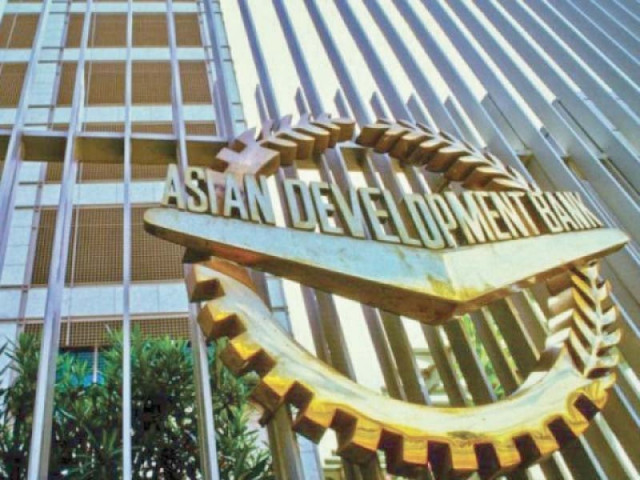ADB estimates Pakistan’s growth to slow down to 3.9%
Projects higher inflation, pressure on exchange rate and current account deficit

The ADB predicted that the govt would miss its revised budget deficit target of 5.6% of GDP. PHOTO: FILE
The Asian Development Outlook 2019 - the flagship publication of the Manila-based lending agency - has affirmed all the apprehensions about the flagging economy for at least two years.
“Until macroeconomic imbalances are alleviated, the outlook is for slower growth, higher inflation, pressure on the currency and heavy external financing needed to maintain even a minimal cushion of foreign exchange reserves,” said the report.
The gross domestic product (GDP) growth will decelerate for the second consecutive year and could hit 3.9% in the current fiscal year ending June 30. For the next fiscal year 2019-20, the economic growth could further slow down to 3.6%, it added.
At 3.9% growth rate, Pakistan’s economy will be the sixth slowest growing economy in a bloc of eight South Asian nations.
The ADB noted that average inflation at the end of current fiscal year would be 7.5% due to continued heavy government borrowing from the central bank, hike in domestic gas and electricity tariffs, further increase in regulatory duties on luxury imports and the lagged impact of currency depreciation.
The current account deficit will remain high at 5% of GDP or $14 billion because of a large trade deficit, according to the ADB. However, it will be $5 billion less than the last fiscal year.
Financing the high current account deficit in FY19 will require substantial borrowing and will consume much of the bilateral lending support announced in the early months of 2019 to finance the deficit in balance of payments. The Pakistan Tehreek-e-Insaf (PTI) government has so far obtained loans of $7.2 billion from three friendly countries to avoid default on international debt payments.
Also, the foreign exchange reserves, which dropped to $8.1 billion in February 2019, will likely remain stressed at the end of FY19. The reserves later increased to $10.6 billion after another injection of $2.1 billion by China.
The ADB underlined that macroeconomic stability was needed to create an environment that inspired business confidence and was conducive to investment and trade. Facing twin deficit in fiscal and current accounts, the government has long been bedeviled by difficult policy choices that pitted improved tax revenues against enhanced competitiveness.
The bank predicted that the government would miss its revised budget deficit target of 5.6% of GDP.
Public debt will also remain elevated in the current fiscal year, which increased to 72.5% of GDP by the end of last fiscal year, above the 60% threshold stipulated in the Fiscal Responsibility and Debt Limitation Act.
Finance Minister Asad Umar said on Wednesday the public debt as a percentage of GDP would gradually fall, but it would still remain far above the statutory limit of 60% of GDP.
However, the most worrisome aspect is the slowing of the real economy, which will increase unemployment and poverty in the country.
The ADB said the supply side of the economy was already showing signs of slowdown. Agriculture is expected to underperform and miss the 3.8% growth target after water shortages struck as wet season crops were being sown.
Large-scale manufacturing contracted 1.5% in the first half as domestic demand shrank and rising world prices crimped demand for raw material. The contraction hit all key categories, including a 0.2% decline in textiles. A slowdown in agriculture and industry as domestic demand shrank would keep growth in services subdued, it added.
The ADB stated that the International Monetary Fund (IMF)-backed stabilisation policies and rising inflation were likely to contain growth in private consumption and investment, while public-sector development spending had already slackened. With exchange rate flexibility and declining imports, net exports are expected to contribute to growth.
The government also faces serious problems in managing its budgetary books. Budget expenditure increased 5.5% in the first half of FY19 over the same period a year earlier as current spending rose for interest payments and defence.
Lower revenue collection and higher current expenditure pushed the budget deficit from 2.3% of GDP in the first half of FY18 to 2.7% a year later. This situation will make it a challenge for the government to achieve reduction in the budget deficit it targets for FY19.
The second supplementary budget, adopted on March 6, 2019, without information on the projected deficit, focuses on an economic reform package envisaging incentives and measures to encourage investment and exports, enhance the ease of doing business and strengthen export-oriented activities, added the ADB.
Published in The Express Tribune, April 4th, 2019.
Like Business on Facebook, follow @TribuneBiz on Twitter to stay informed and join in the conversation.


















COMMENTS
Comments are moderated and generally will be posted if they are on-topic and not abusive.
For more information, please see our Comments FAQ